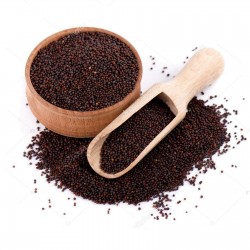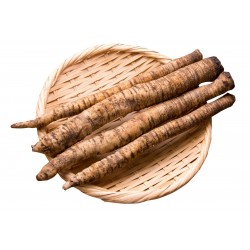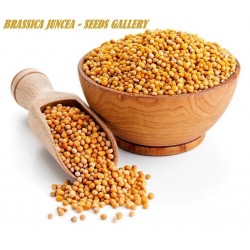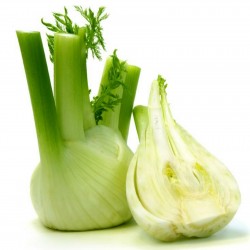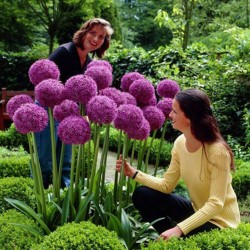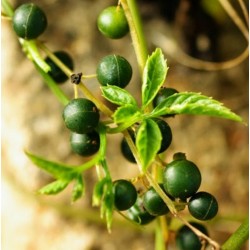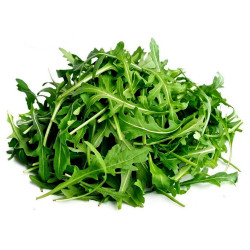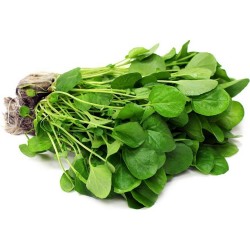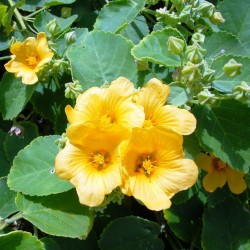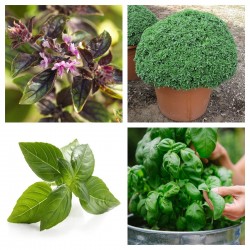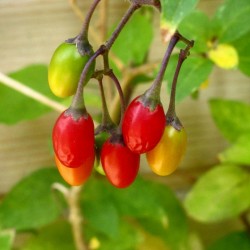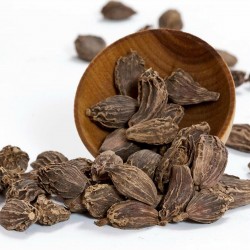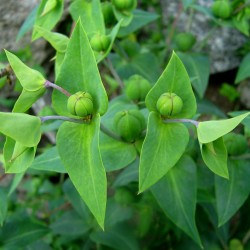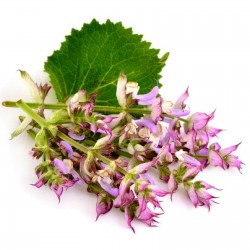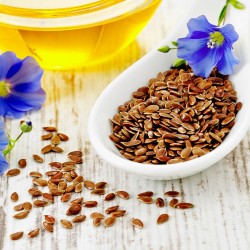Seeds Gallery EU,
5/
5
<meta http-equiv="Content-Type" content="text/html; charset=UTF-8" />
<h2><strong>Tohumlar Euphorbia lathyris</strong></h2>
<h2><span style="color: #ff0000;"><strong>10 tohum paketi için fiyat.</strong></span></h2>
<p>Euphorbia çok büyük ve çeşitlidir cins arasında çiçekli bitkiler yaygın olarak adlandırılan, sütleğen sütleğen içinde, ailenin ( Euphorbiacae ). "Euphorbia" bazen topluca (gözönünde bulundurularak Euphorbiaceae tüm üyelerine atıfta bulunmak için sıradan İngilizce olarak kullanılan tip cinsinin sadece cinsinin üyeleri,). Bazı euphorbias gibi ticari yaygın olarak bulunmaktadır poinsettias Noel'de. Bazı yaygın süs olarak yetiştirilen veya toplanan ve son derece tür dikenler bitki (tacı olarak kendilerine özgü çiçek yapılarının, estetik görünümünde değerlenir Euphorbia milii ). Güney çöllerinden euphorbias Afrika ve Madagaskar fiziksel özellikleri ve benzer formlar evrimleşmiş kaktüsler Kuzey ve Güney Amerika, bu yüzden (bitkilerin çeşitli başka türlü birlikte) genellikle yanlış kaktüs olarak adlandırılır. Bazı için güzel ya da çarpıcı genel formları ve kuraklık ve ısı toleransı, peyzaj süs olarak kullanılır.</p>
<p>Euphorbias minik aralığı yıllık bitkilerde büyük ve uzun ömürlü ağaçlara. Cins o biri haline üzerinden veya yaklaşık 2.000 üyesi bulunan çiçekli bitkilerin büyük cins . Aynı zamanda en büyük aralıkları birine sahip kromozom sayımları birlikte Rumex ve Senecio . Euphorbia Antiquorum cinsinin tip türdür Euphorbia . İlk tarif edilmiştir Carl Linnaeus içinde 1753 yılında Türler Plantarum .</p>
<p>Bitkiler zehirli bir, sütlü, beyaz, sahip özelliğini paylaşan lateks benzeri öz ve sıradışı ve eşsiz çiçek yapıları. Cinsi üyelerinin gen dizilerinin özellikleri tarafından tarif edildiği gibi veya şekil ve form ile (edilebilir morfolojisi çiçeklerin başları). Bir bütün olarak bakıldığında, çiçek kafa, tek bir çiçek (a benziyor pseudanthium ). Bu adlandırılan pseudanthium eşsiz tür vardır cyathium kafasındaki her çiçek eşeyli üreme için gerekli olan barest önemli bir parçası indirgenir. Bireysel çiçekler sadece düşürüldü erkek çiçekler, erkek veya kadın olan stamen için, kadınlarda dişi organ . Bu çiçekler hiç sahip çanak , yaprakları bitkilerin diğer tür çiçek karakteristik veya diğer bölümleri. Yapılar çiçek baş destekleme ve altındaki nektar ile pollinatorsu çekmeyi geliştiğini ve şekil ve yön işlev renklerle yaprakları diğer çiçek yapmak ve diğer çiçek parçaları. Bu fotosentez, her üç çeşit bitki tek cinsidir CAM , C3 , ve C4 .</p>
<p>Cins tüm dünyada bulunabilir. Formlar arasında değişir yıllık bitkilerde iyi gelişmiş uzun boylu ağaçlar, yerde yatan. Madagaskar ve güney Afrika'da çöllerinde, yakınsak evrim kaktüsler Kuzey ve Güney Amerika çöllerinde yaptığı gibi bitkiler aynı ekolojik niş işgal kaktüs benzeri formlarda yol açmıştır. Cins öncelikle bulunur tropikal ve subtropikal değil, aynı zamanda içinde, Afrika ve Amerika bölgelerinde ılıman bölgelerde dünya çapında. Sulu türler Afrika'nın, Amerika'nın ve Madagaskar çoğunlukla kaynaklanmaktadır. Geniş bir dar türleri bulunabilir.</p>
<p>kaktüsler gibi misidentification<br />Meslekten olmayan kişiler arasında, Euphorbia türleri en sık karıştırılmaması bitki taksa arasındadır kaktüs özellikle, kök sulu meyveler . Euphorbias lateks ile bir yapışkan, süt gibi beyaz bir sıvı salgılar, ancak kaktüs yok. Euphorbias Bireysel sık sık çiçekler fevkalade gösterişli çiçekler var kaktüsler aksine yaprakları ve çanak yaprakları, olmadan, genellikle küçük ve (bireysel çiçeklerin etrafında yapılar olmayabilir rağmen) tanımlanamaz. Kaktüs benzer büyüme formları ile çöl habitatları euphorbias sahip dikenleri kaktüs dikenler farklıdır.</p>
<p>etimoloji<br />Ortak adı "sütleğen" türetilmiştir Orta İngilizce / Eski Fransızca espurge nedeniyle olarak bitkinin özsuyu kullanımı ile ( "tasfiye etmek") purgatif . Botanik adı Euphorbia kaynaklanmaktadır Euphorbos , Yunan kral ve hekim Juba II arasında Numidya Anthony ve Kleopatra kızı ile evlendi - (23 AD 52-50 BC). Juba dahil olmak üzere çeşitli konularda, üzerinde üretken bir yazardı doğal tarih . Euphorbos kaktüs benzeri euphorbias (artık ismi biri olduğunu yazdı Euphorbia obtusifolia ssp. Regis-jubae ) güçlü olarak kullanıldı müshil . Olarak 12 M.Ö. Juba, onun doktor Euphorbos sonra bu bitkiyi adlı Augustus Sezar Euphorbos kardeşi, bir heykel adanmış olan Antonius Musa Augustus özel doktoru oldu. 1753 yılında botanikçi ve taksonomisti Carl Linnaeus adı verilen Euphorbia hekimin onuruna tüm cins için.</p>
<p>Açıklama<br />Bitkiler yıllık , iki yılda bir veya çok yıllık bir kostik, zehirli sütlü lateks ile otlar, odunsu çalılar veya ağaçları. Kökler , ince veya kalın ve etli veya yumru bulunmaktadır. Birçok türün az ya da çok, etli dikenli veya silahsız. Ana sap ve sulu türlerin çok aynı zamanda yan kollar 15-91 sm (6-36 olarak) uzun, kalın ve etli. Yaprak döken yapraklar olabilir karşısında , alternatif veya içinde whorls . Sulu türler, yapraklar çok küçük ve kısa ömürlüdür. Stipules , çok küçük kısmen dönüştürülmüş olan dikenler veya bezleri veya eksik.</p>
<p>Çiçek ve meyve<br />aile Euphorbiaceae tüm üyeleri gibi, spurges cinsli çiçekler var.</p>
<p>In Euphorbia , çiçekler bir baş denilen meydana cyathium (çoğul cyathia). Erkekler de cyathium kafasında her erkek veya kadın çiçek, sadece temel cinsel parçası vardır erkeklik organı , kadınlarda dişilik organı . Çiçekler yok çanak , yaprakları veya nektar bitkinin diğer nonflower parçaları benzer rolleri olan bir görünüm ve nektar bezleri olmasına rağmen, polen çekmek için. Euphorbias çiçek başının bu tür bilinen tek bitkilerdir.</p>
<p>Polen çekmek Nektar bezleri ve nektar involucre aşağıdan bir cuplike parçası ve cyathium kafasını destekleyen düzenlenmektedir. Cins içinde ( "involucre" Euphorbia (denilen bracts topluluğudur aile Asteraceae üyelerinde "involucre" ile karıştırılmamalıdır değildir phyllaries çevreler ve açılmamış çiçek başını örten), daha sonra bunun altında priz desteklemek çiçek kafa açar sonra.)</p>
<p>İnvolucre yukarıda tarafından desteklenen gonca yaprağı (genellikle çiftler halinde) yaprak yapıları modifiye benzeri cyathophylls' ya cyathial yaprakları adı. Cyathophyll genellikle çiçeğin olmanın yaprakları yüzeysel görünüme sahiptir.</p>
<p>Euphorbia çiçek küçük ve farklı form ve renkleri ile farklı polen (ve insan gözü), çekme varyasyonu, bu bağlanmış bezleri gibi cyathium, involucre, cyathophyll veya ek parça olarak gerçekleşir.</p>
<p>Birçok çiçek toplama bazen denilen şekilli ve tek bir birey çiçek olarak topluca görünmesini düzenlenebilir pseudanthium Asteraceae içinde ve aynı zamanda Euphorbia .</p>
<p>Türün çoğunluğu monoecious bazı olmasına rağmen, (aynı bitki üzerinde erkek ve dişi çiçek rulman) dioik erkek ve dişi çiçek farklı bitkiler üzerinde meydana gelen. Bir merkez cyathia için olağandışı değildir Kyme saf erkek olmak, ve yan cyathia için her iki cinsiyet de taşımaktır. Bazen genç bitkiler veya elverişsiz koşullarda büyüyen olanlar sadece erkek vardır ve olgunlukla cyathia veya yetişme koşulları iyileştirmek olarak dişi çiçekleri üretmek sadece.</p>
<p>Tek bir pistil indirgenmiş dişi çiçek genellikle her ucunda iki tepeciklere ile genellikle, üç bölüme bölünür. Erkek çiçekler genellikle ikişer ikişer anter var. Nektar bezleri genellikle biri kadar az olabilir, beşli meydana gelir ve bir "U" şeklinde birleştirilebilir. cyathophylls genellikle ikişer ikişer, yaprak gibi ortaya çıkar ve böceklerin daha gösterişli ve parlak renkli ve çekici olabilir veya ancak görünür küçük ölçeklere azaltılabilir.</p>
<p>Meyveler, üç ya da nadiren iki bölmeli olan kapsüller , bazen etli, ancak hemen hemen her zaman daha sonra açık bazen böler odunsu kabına olgunlaşma, patlama . Tohumlar , dört köşeli, oval ya da küre şeklinde ve bazı türler vardır karünkül .</p>
<p>Xerophytes ve sulu meyveler<br />Cins olarak Euphorbia , türlerde sulu olma genellikle divergently ve farklı derecelerde gelişmiştir. Bazen, karar vermek zordur ve bir tür gerçekten etli veya "sadece" olup olmadığını, yorumlama meselesidir kserofitik . Bazı durumlarda, özellikle birlikte geofitlerden yakından kaktüsedüşenleri ilgili bitkiler, normal otlar vardır. Yaklaşık 850 tür sağın anlamında etli bulunmaktadır. Bir hafif sulu ve kserofitik türler içerir, bu rakam tüm yaklaşık% 45'ini temsil etmektedir, yaklaşık 1000 yükselir Euphorbia türleri.</p>
<p>irritanlar<br />( "Lateks" olarak adlandırılır) spurges sütlü sap karşı engelleyici bir evrimleşmiş otçul . Bu dışında, kuru iken, beyaz ve saydam E. abdelkuri sarı bir. Basınçlı özsuyu ufak yaradan sızan ve havada birkaç dakika sonra donar. Cilt tahriş edici ve aşındırıcı etkileri büyük ölçüde değişen miktarlarda kaynaklanır diterpenlerin . Triterpenler gibi betulin ve karşılık gelen esterler lateks diğer önemli bileşenleridir. Mukozaya (göz, burun, ağız) ile temas halinde, lateks çok acı verici üretebilir iltihabı . Bu nedenle, spurges dikkatle ele alınmalıdır ve çocukların ve evcil hayvanlardan uzak tuttu. Ciltte Lateks derhal büyük bir dikkatle yıkanmalıdır. Katılaşan lateks suda çözünmez, ama süt veya sabun gibi bir emülsiyon yapıcı ile temizlenebilir. İnflamasyon özünden maruz kaynaklanabilir kalıcı körlüğe dahil ciddi göz hasarı gibi meydana gelirse bir hekime danışılmalıdır. Bir serada büyük etli spurges kesilir zaman buharlar uzak gözler ve boğaz birkaç metreye kadar tahrişe neden olabilir. Uygun havalandırma içeren tedbirler, gereklidir.</p>
<p>Kullanımları<br />Çeşitli spurges aralarında bahçe bitkileri olarak büyütülür Atatürk çiçeği ( E. pulcherrima ) ve sulu E. Trigona . E. pekinensis ( Çin : 大戟 ; pinyin : dàjǐ ) kullanılan geleneksel Çin tıbbı o biri olarak kabul edilir, 50 temel otlar . Çeşitli Euphorbia türleri gıda bitkileri olarak kullanılan larvalara bazı Lepidoptera sütleğen şahin güveler (olduğu gibi, (kelebek ve güveler) Hyles euphorbiae ve Hyles tithymali ), hem de dev pars güve .</p>
<p>İngenol mebutate , tedavi etmek için kullanılan bir ilaç aktinik keratoz , bir olduğunu Diterpenoid bulundu Euphorbia peplus .</p>
<p>Euphorbias genellikle Afrika'nın birçok yerinde bitkileri hedging olarak kullanılır.</p>
<p>Euphorbia kendi eski subtribe, ne tekabül Euphorbiinae . Bu 2000'den fazla türü vardır. Morfolojik bir cyathium varlığını kullanılarak açıklama üyelerinin yaklaşık% 10 test nükleer ve kloroplast DNA sekansı verileri ile tutarlıdır (bakınız yukarıdaki bölüm). Bu test, en iyi dahil olmak üzere bu tek cins, yerleştirilmeden olarak eski diğer cinslerin dahil destekler Chamaesyce , Monadenium , Pedilanthus ve Atatürk çiçeği ( E. pulcherrima ).</p>
<p>Genetik testler cins içindeki benzer çiçek kafa yapıları veya formlar, cins içindeki yakın soy anlamına olabileceğini göstermiştir. genetik bilgi cins içinde, çiçeklenme yapıların yakınsak evrim ilgili olmayan ata alt birime kadar olabileceğini göstermektedir. cins ayrıca alt cins gruplama için sorunlu hale dahilinde Yani morfolojiyi kullanarak. Euphorbia Gezegen Biyoçeşitlilik Envanter proje web sayfasında belirtildiği gibi -</p>
<p>Cins içinde subgenerasının veya bölümlerin Önceki morfolojik temelli Delimitasyonlar doğru kabul edilmemelidir. Cins aslında morfolojik önemli örneklerindendir ile yaygın olduğunu yakınlaşma tüm grubun uygun bir filogenetik anlayış elde etmek cins okuyan global bir yaklaşımla haklı cyathial ve vejetatif özellikleri, .... İşin özeti şu ki daldaki bir dizi farklı zamanlarda içinde veya Euphorbia dışında yerleştirilmiş olan ... altcins circumscriptions birkaç DNA dizi analizi altında tutun.</p>
<p>Üzerine yapılan çalışmaları 2002 yayınına göre DNA dizisi büyük cins etrafında küçük "uydu cins" çoğu verilerine Euphorbia derin ikincisi içinde yuva. Sonuç olarak, bu takson , yani asla genel kabul görmüş cinsi Chamaesyce yanı sıra daha küçük cins Cubanthus , Elaeophorbia , Endadenium , Monadenium , Synadenium ve Pedilanthus nakledildi Euphorbia . Tüm subtribe Euphorbiinae artık sadece cinsinin oluşur Euphorbia .</p>
<p>Melezler<br />Euphorbia yoğun olmuştur hibritlenmiş birçok bahçe kullanımı için çeşitlerin ticari olarak temin edilebilir. Ayrıca, bazı hibrid bitkiler, örneğin, vahşi büyüyen bulunmuştur E. x martini Rouy, bir enine E. amygdaloides x E. characias subsp. characias , Güney Fransa'da bulunan.</p>
<p>alt türler<br />Cins Euphorbia çiçekli bitkilerin en büyük ve en karmaşık cins biridir ve birkaç botanikçiler sayısız küçük cins içine cins alt gruplara ayırmak başarısız girişimde bulundu. Son göre filogenetik çalışmalar, Euphorbia her birkaç yeterince incelemeden henüz içeren dört subgenerasının ayrılabilir bölümleri ve grupları. Bunlardan, Esula en çok bazal . Chamaesyce ve Euphorbia muhtemelen kardeş takson , ama çok yakından ilgilidir Rhizanthium . Kapsamlı xeromorph olasılıkla uyarlamalar gelişti birkaç kez; kaktüs benzeri ortak atası ise bilinmemektedir Rhizanthium ve Euphorbia soyları xeromorphic-ki bu durumda daha normal bir morfolojisi, yani yeniden geliştiğini olur olduğu Chamaesyce geniş xeromorphism tamamen olup -veya polyphyletic da subgenerasının seviyesine .</p>
<p></p>
MHS 30 (10 S)
